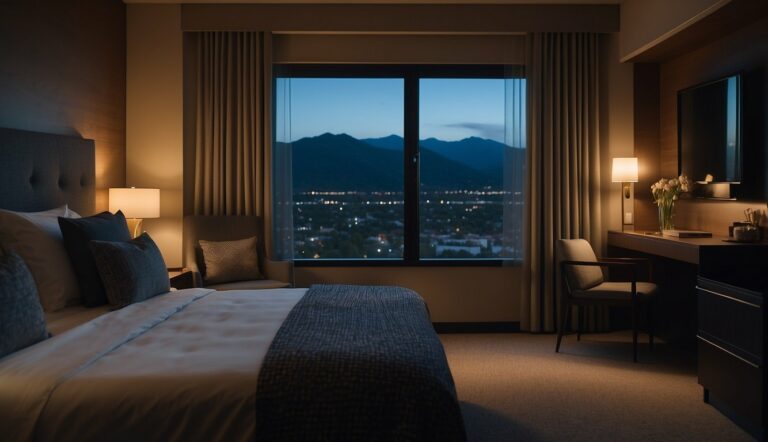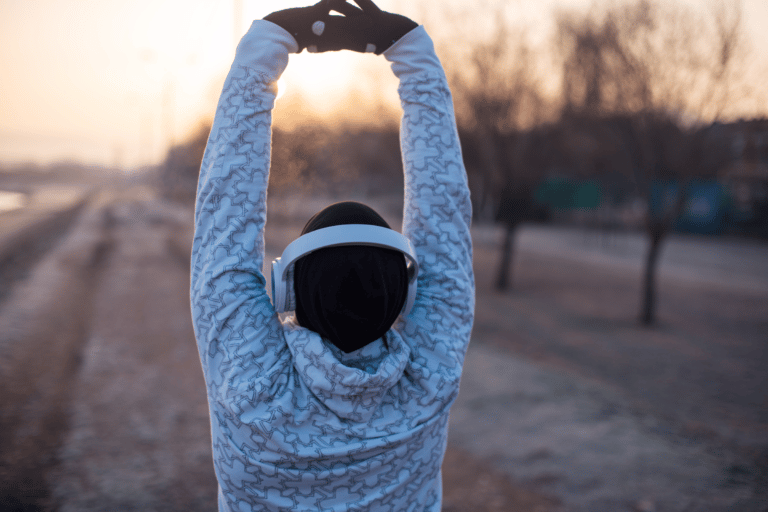Best Warm-Up for Road Running (Quick 10-15 Minute Routine)
A proper warm-up is essential for any road running session, aiming to prepare your body and mind for the exercise ahead. Starting with 10 to 15 minutes of dynamic movements, focus on gradually increasing your heart rate and loosening your muscles.
This routine is designed to enhance your performance and reduce the risk of injury by ensuring that your body is adequately prepared for the physical demands of running.

Effective warm-up exercises specifically target the muscles used in running, such as the calves, hamstrings, quadriceps, and hip flexors. Begin slowly with walking or light jogging and gradually build up to a pace that slightly challenges you but doesn’t leave you fatigued. Integrating dynamic stretches, such as leg swings and lunges, can further activate your muscles, making them more elastic and ready for the run ahead.
Skipping a warm-up or sticking to static stretches alone is not recommended, as studies have indicated this might decrease muscle strength and power. Instead, aim for a balanced routine that combines dynamic stretches with a short jog. This combination has been shown to improve running performance, allowing you to enjoy your run with a lower chance of experiencing discomfort or injury.
The Best Warm-Up Routine for Road Running
Engaging in a balanced warm-up prepares your muscles and joints for the demands of road running, enhancing performance and reducing the risk of injury. This 15-minute routine is a composite of cardio activation, dynamic stretching, and muscle activation exercises.
5-Minute Cardio Activation
Begin your warm-up with a low-impact cardio session to gradually raise your heart rate and get blood flowing to your muscles.
- 1-2 minutes: Start with brisk walking to ease into the routine.
- 3-5 minutes: Transition to a light jog, focusing on a comfortable pace that gradually picks up your heart rate.
5-Minute Dynamic Stretching Sequence
Dynamic stretching improves flexibility and warms the muscles through controlled movements.
- Leg Swings: Stand on one leg and swing the other leg forward and back (20 seconds each leg).
- Lateral Leg Swings: Hold onto a post or wall, face it, and swing your leg side to side across your body (20 seconds each side).
- Arm Circles: Extend your arms and perform small to larger circles to loosen the shoulders (20 seconds).
- Walking Lunges: Lunge forward with a straight back, engaging hip flexors and thighs (60 seconds).
5-Minute Muscle Activation and Mobility
Finally, perform muscle activation exercises to improve joint mobility and ensure your muscles are ready for running.
- Butt Kicks: While jogging in place, kick your heels up towards your glutes (30 seconds).
- High Knees: Raise your knees to waist level at a moderate pace (30 seconds).
- Strides: Perform 4-6 strides, running about 100 meters at a faster pace, focusing on form (2 minutes).
- Hip Circles: Stand with hands on hips and move your hips in a circular motion (30 seconds each direction).
Execute these exercises in sequence to optimize your body’s readiness for a productive road running session.
Fundamentals of a Proper Road Running Warm-Up
Beginning your run with an effective warm-up routine is key for priming your body and reducing the risk of injury. A thorough warm-up elevates your heart rate, increases blood flow to your muscles, and enhances your range of motion.
Understanding the Warm-Up Process
When you start a warm-up, you’re preparing your body for the demands of road running. The aim is to gradually boost your heart rate and circulation. This increased blood flow raises the temperature of your muscles and joints, making them more flexible and responsive. Start with light aerobic activity such as brisk walking or slow jogging for 5 to 10 minutes. This not only begins to increase your heart rate but also starts warming up your muscles.
Physiology of Warming Up
Blood Flow and Temperature: A proper warm-up involves activities that cause a mild, incremental increase in heart rate, which in turn raises your body temperature and the blood flow to various muscles.
Heart Rate:
- Start: 60-100 bpm (resting heart rate)
- After Warm-Up: aim for 50-70% of max heart rate
Muscle and Joint Preparation:
- Muscles: Warmed-up muscles exhibit better elasticity and function, which can enhance your performance.
- Joints and Tendons: The range of motion in your joints improves, and tendons become more flexible, reducing the risk of strains and injuries.
By following these warm-up fundamentals, you’ll not only perform better, but you’ll also help protect yourself against the common injuries associated with road running.
Dynamic Warm-Up Techniques for Road Runners
Before hitting the road, a 15-minute dynamic warm-up can effectively prepare your body for the demands of running. Engaging in dynamic stretches improves flexibility and activates the muscles you’ll use during your run.
Lower Body Dynamic Stretches
Your lower body is the powerhouse for running. Focus on dynamic stretches that target the legs, hips, and glutes to increase range of motion and blood flow.
- Lunges: Step forward into a lunge, keeping your knee above your ankle. Alternate legs.
- High Knees: Raise your knees to your chest as you walk or lightly jog forward.
- Butt Kicks: Lightly jog forward while kicking your heels up toward your glutes.
| Movement | Targeted muscles |
|---|---|
| Lunges | Quadriceps, hamstrings, glutes, hip flexors |
| High Knees | Hip flexors, quadriceps, calves |
| Butt Kicks | Hamstrings, glutes |
Upper Body Dynamic Stretches
The upper body assists in stability and rhythm while running. Give these parts attention to maintain good form.
- Arm Circles: Extend your arms and do small to large circles both clockwise and counter-clockwise.
- Shoulder Shrugs: Raise your shoulders up towards your ears and then release them back down.
| Movement | Targeted muscles |
|---|---|
| Arm Circles | Shoulders, upper back, chest |
| Shoulder Shrugs | Traps, shoulders, neck |
Core Activation Exercises
A strong core maintains your posture and reduces the risk of injury. Activate your core with exercises that engage all parts of your torso.
- Standing Bicycle Crunches: Raise your knee as you bring the opposite elbow down toward your knee, alternating sides.
- Dynamic Plank: Start in a standard plank, then alternate bringing each foot up towards the outside of your hand.
| Movement | Targeted muscles |
|---|---|
| Standing Bicycle Crunches | Obliques, abdominal muscles, hip flexors |
| Dynamic Plank | Abdominal muscles, lower back, hip flexors |
By incorporating these dynamic warm-ups into your routine, you enhance muscle flexibility and overall performance, making your road running more efficient and enjoyable.
Common Mistakes and Tips for Road Runners
As a road runner, optimizing your warm-up routine is crucial to both enhance performance and prevent injuries. This includes understanding which stretches can be beneficial and how to maintain proper running form.
Avoiding Static Stretches Pre-Run
Dynamic warm-ups are your go-to before hitting the pavement. Static stretches, while beneficial after your run during the cool down, can be counterproductive beforehand.
Muscles respond better to movement that mirrors the activity you’re about to engage in, such as a gentle jog or dynamic stretching exercises. Aim to integrate moves like leg swings and lunges that prepare your muscles and joints for the motion of running.
| Static Stretches Pre-Run | Dynamic Warm-Up Exercises |
|---|---|
| Leg stretches | Leg swings |
| Overhead arm stretch | Walking lunges |
| Toe touches | Gradual jogging |
Running Form and Injury Prevention
Proper running form entwines with injury prevention strategies. Your posture should be upright, with a slight forward lean, and your feet should land directly under your body to avoid overstriding.
Incorporate a range of movements into your warm-up routine to activate all the muscle groups involved in running to help sidestep common running injuries. End your runs with a cool down to gradually bring your heart rate down and follow up with stretching to improve flexibility and aid recovery.
Key Components of Running Form:
- Keep your back straight and lean slightly forward
- Land with your feet beneath your body to prevent overstriding
- Use a relaxed arm swing that complements your leg movement
Remember, a proper warm-up increases blood flow, ensuring better performance and diminished risk of injury.






